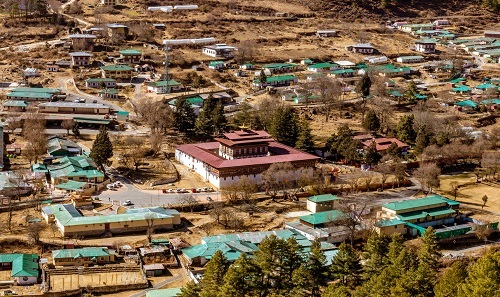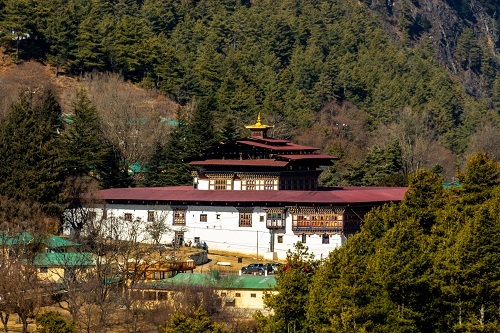Haa Dzong, formally known as Wangchuk Lo Dzong, is one of Bhutan’s newest dzong built in 1915 to replace the small structure. Haa Dzong is situated at the eastern side of Haa in Damchoe region. It is one of the first sights that you see upon reaching Haa district. The dzong was originally built in 1895 after the appointment of the first Drungpa, Head of Sub-district. The dzong serves as a defence against Tibetan invasions given its proximity to the Tibetan borders.

Legend has it that Haa Dzong was built to hold back the evil influences of the serpent deities on the lives of the people and their livestocks. Locals believe that there are 108 serpent deities around the area. Some of the chortens (stupas) which were built to appease these deities, can still be found today.
In terms of architecture, Haa Dzong is a lot smaller in size compared to the other bigger fortresses in Bhutan. However, the design is not any less impressive. Haa Dzong was heavily damaged by a fire in 1913. Gongzim Ugyen Dorje started the building of a new one in the same year.

The dzong was built as an administrative office for the Royal Government of Bhutan, as well as the Indian Military Training Team. In 1963, Haa Dzong’s responsibility was handed over to the Indian Military for them to use as a training and coordination centre.
In order to provide the facilities for these expat officials, the Haa Dzong also took the responsibility to uphold venues like the Wangchuk Lo Dzong Military School, a military hospital and school for the children of the Indian expats. Due to these reasons, most of the festivals in Haa are celebrated in Lhakhang Karpo instead.
The Haa Spring Festival is a vibrant cultural event held annually in Haa Valley, Bhutan, celebrating the rich traditions and heritage of the region. Typically taking place in April, the festival features a variety of activities that showcase local customs, cuisine, and crafts. Visitors can enjoy traditional performances, including folk dances, music, and storytelling, which highlight the unique cultural identity of the Haa community.
One of the festival's highlights is the display of traditional Bhutanese archery, a sport deeply rooted in the country’s culture. Additionally, local farmers and artisans showcase their products, offering a chance for attendees to taste authentic Bhutanese dishes and purchase handmade crafts.